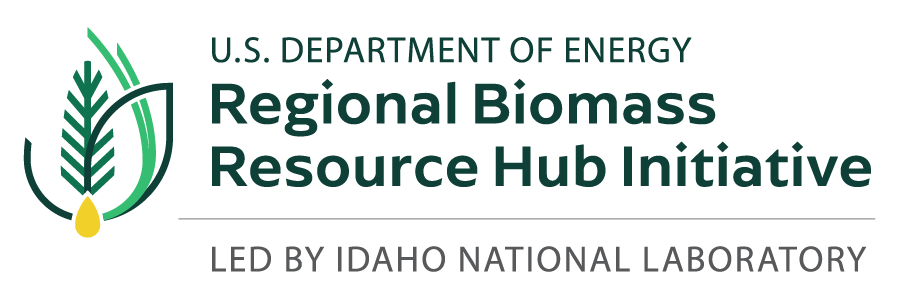Description
Thermal degradation including torrefaction and pyrolysis take place in the absence of oxygen to divert chemical changes in material from combustion chemistry to biopolymer deconstruction. The resulting product(s) are a carbonaceous char (by many names such as char, biochar, biocoal, biocarbon, etc.), as well as some gases and volatile components. The distribution of components and the extent of the chemical/structure changes in a material strongly depend on the reaction conditions, however, torrefaction can improve biomass by improving the heating value, increasing the carbon concentration, decreasing water uptake and increasing biological stability, create a more friable fiber structure that increases throughput and decreases specific energy consumption during size reduction, and can enhance the thermal stability of volatile-rich feedstock, among others. During biomass torrefaction, the least thermally stable constituents such as saps, resins, and other extractives degrade first with increasing temperature, followed by hemicellulose sugars in the range of 200-240C. This is followed by broad temperature regions over which cellulose and lignin components degrade over, leaving the most thermally recalcitrant carbon structures and inorganics that were present.
Capability Bounds
- Small batch scale from <1g-100g, up to 1100C measuring dynamic mass loss
- Large batch scale from 100g-5kg, up to 290C, can capture some volatile components for analysis
- Small continuous scale from 5kg/hr-50kg/hr to be commission in 2024, up to 850C
- Large continuous scale, mobile unit, from 100kg/hr to 3tonnes/hr, up to 800C
Unique Aspects
- Multi-sample batch production and analysis available
- Paired catalytic oxidation system with the continuous scale unit for VOC destruction
- All techniques can be ran with materials of wide ranging size/shape
- Mobile, pilot scale torrefaction unit can be deployed at project sites
Availability
This capability is available through collaborative work scopes that utilize a variety of contractual mechanisms to meet the needs of the partners and funding agencies.
Small continuous systems planned availability in late 2024.
Benefit
Torrefaction can improve biomass by improving the heating value, increasing the carbon concentration, decreasing water uptake and increasing biological stability, create a more friable fiber structure that increases throughput and decreases specific energy consumption during size reduction, and can enhance the thermal stability of volatile-rich feedstock, among others
Capability Expert(s)
Jordan Klinger, Nepu Saha, Luke Williams, Rachel Emerson
References
Saha, Nepu, Eric Fillerup, Brad Thomas, Corey Pilgrim, Thomas Causer, Dan Herren, and Jordan Klinger. “Improving bamboo’s fuel and storage properties with a net energy export through torrefaction paired with catalytic oxidation.” Chemical Engineering Journal 440 (2022): 135750.
Xu, Zhuo, Shreyas S. Kolapkar, Stas Zinchik, Ezra Bar-Ziv, Lucky Ewurum, Armando G. McDonald, Jordan Klinger, Eric Fillerup, Kastli Schaller, and Corey Pilgrim. “Bypassing energy barriers in fiber-polymer torrefaction.” Frontiers in Energy Research 9 (2021): 643371.
Xu, Zhuo, Shreyas S. Kolapkar, Stas Zinchik, Ezra Bar-Ziv, Jordan Klinger, Eric Fillerup, Kastli Schaller, and Corey Pilgrim. “Kinetic study of paper waste thermal degradation.” Polymer Degradation and Stability 191 (2021): 109681.
Klinger, Jordan L., Tyler L. Westover, Rachel M. Emerson, C. Luke Williams, Sergio Hernandez, Glen D. Monson, and J. Chadron Ryan. “Effect of biomass type, heating rate, and sample size on microwave-enhanced fast pyrolysis product yields and qualities.” Applied Energy 228 (2018): 535-545.
Klinger, Jordan, Ezra Bar-Ziv, David Shonnard, Tyler Westover, and Rachel Emerson. “Predicting properties of gas and solid streams by intrinsic kinetics of fast pyrolysis of wood.” Energy & Fuels 30, no. 1 (2016): 318-325.
